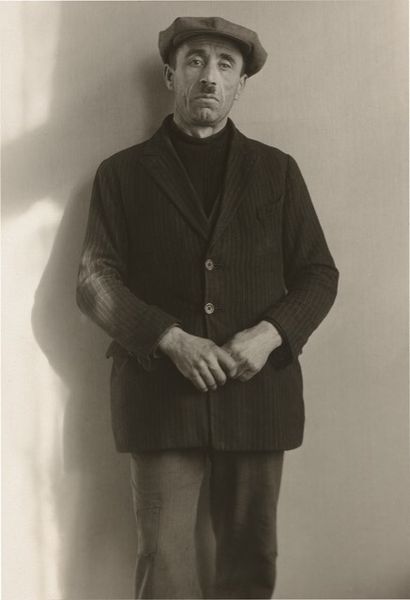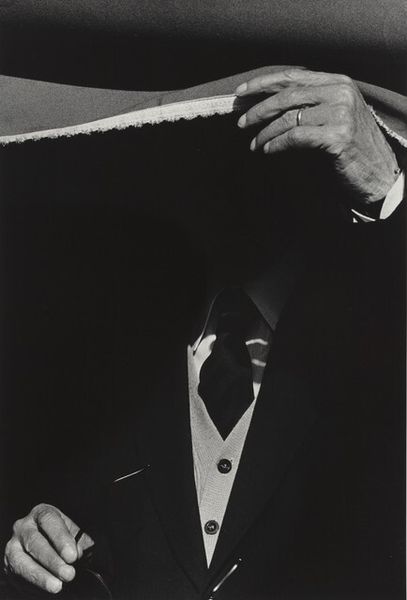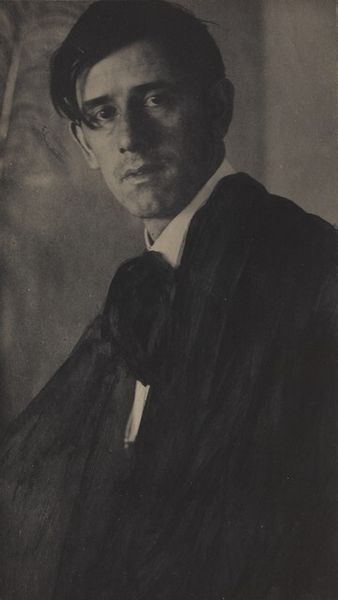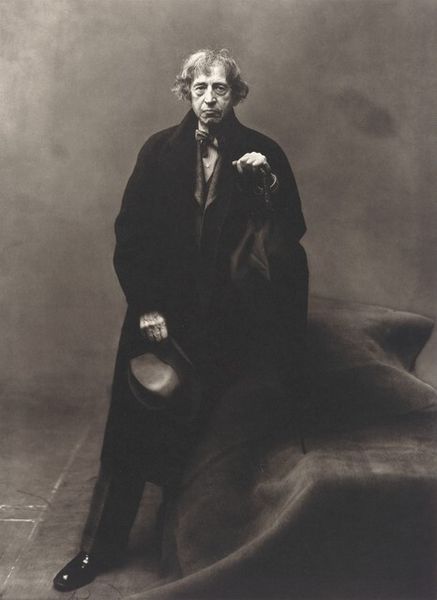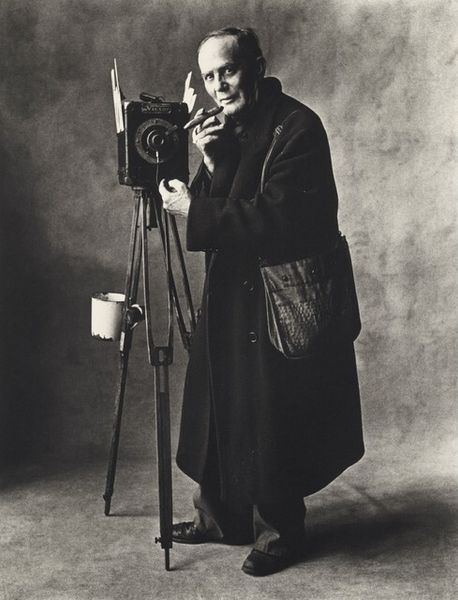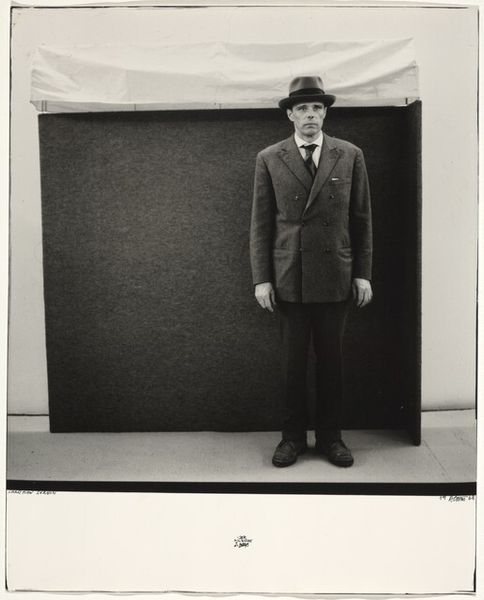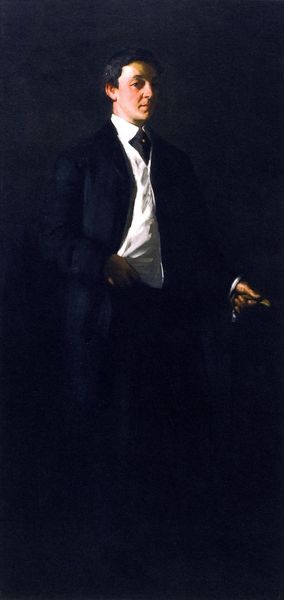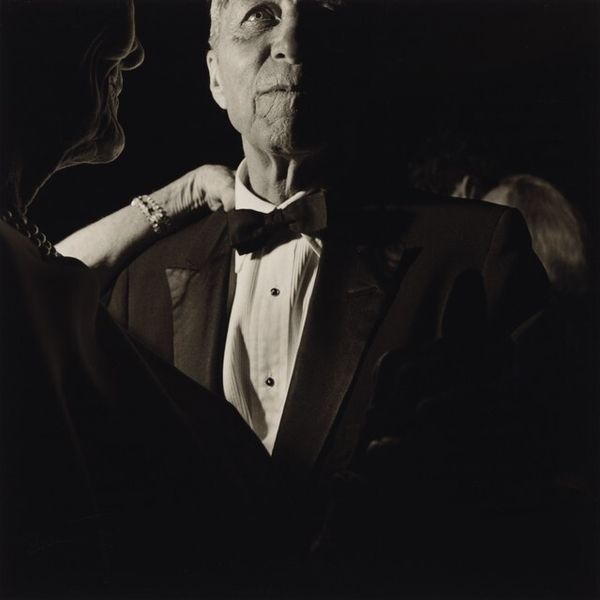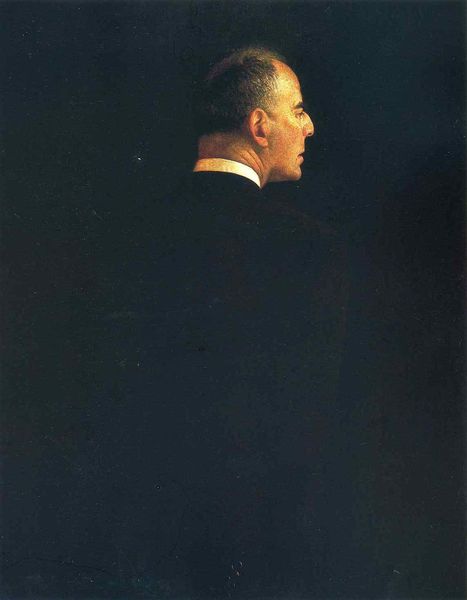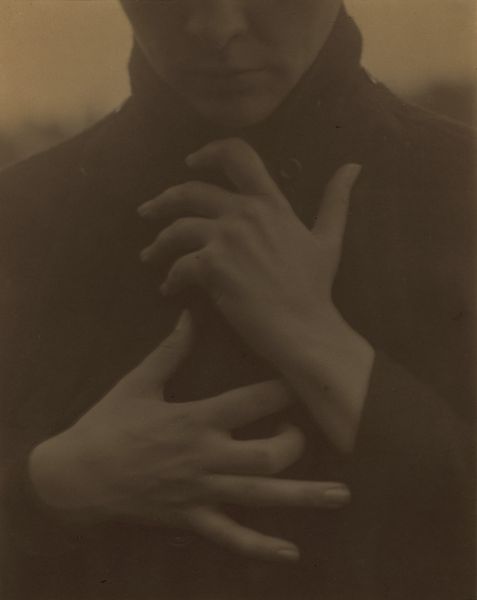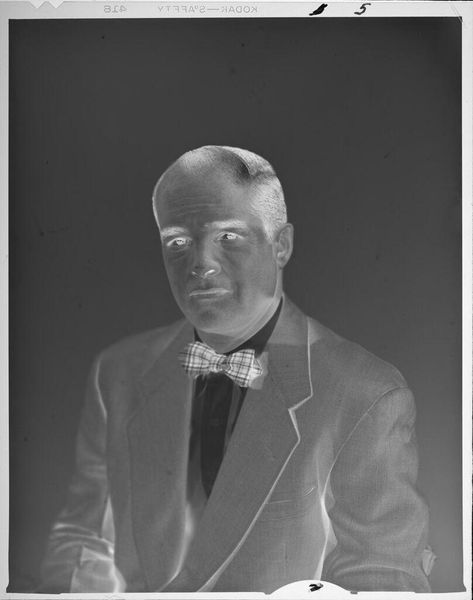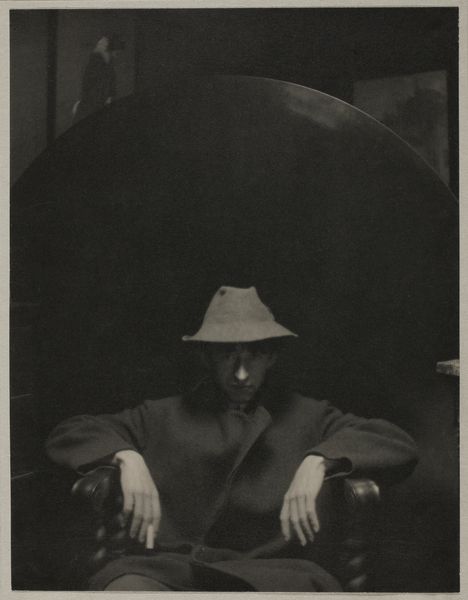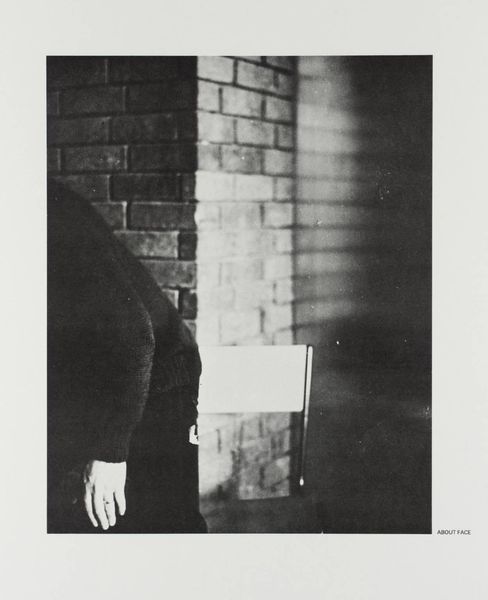
photography
#
portrait
#
character portrait
#
low key portrait
#
portrait
#
photography
#
black and white
#
modernism
#
realism
Dimensions: overall: 48.4 x 31 cm (19 1/16 x 12 3/16 in.)
Copyright: National Gallery of Art: CC0 1.0
Curator: In front of us is Irving Penn's portrait of Marcel Duchamp, taken in New York in 1948. Editor: The immediate feeling is constraint, isn't it? The subject is quite literally cornered, giving the work a closed-in, almost claustrophobic mood despite its modernist qualities. Curator: Penn was a master of the photographic portrait, distilling his subjects to their essential essence. Positioning Duchamp within this tight corner is, I believe, about exploring the multifaceted layers within the iconic Dadaist's personality. There is vulnerability revealed here, as well as something confrontational in the pose. Editor: The way the grayscale tones fall across the surface creates distinct facets too, don't you think? The shadows accentuate the geometric enclosure, further locking him within the frame, within himself even. Semiotically, this suggests restriction or perhaps the constraints of being a celebrated artist. Curator: And that very concept might resonate with Duchamp's own artistic explorations, no? Think of the readymades, and how Duchamp confronted our definitions and expectations of what art can be. Here, it's as if Penn, through his composition, explores that same paradoxical tension between freedom and limitation. Perhaps the artist, boxed in. Editor: It certainly makes you question that smile, doesn't it? The slight upward turn of his lips amidst the stark lines—is it defiance or resignation? The low key lighting adds a layer of ambiguity, really. A portrait of controlled form with concealed psychological intent. Curator: Absolutely. We find symbols that mirror inner conflicts or contradictions within the cultural memory of an icon, the visual equivalent of wrestling with artistic legacies. The eye travels up along this angular, claustrophobic frame to fix on that wry expression as if to find clues. The portrait certainly sparks thought beyond the confines of the photographic frame. Editor: Penn really plays with geometry to make the psychological tension visually striking. It transcends simply capturing a likeness and starts interrogating something deeper. Curator: Yes, and this is a beautiful study in symbolism of spatial and psychological limitation within the vast career of an iconic artist. Editor: Precisely, and formally we've noticed how cleverly space and line combine, inviting multiple perspectives into the image, even beyond the immediate impression.
Comments
No comments
Be the first to comment and join the conversation on the ultimate creative platform.
